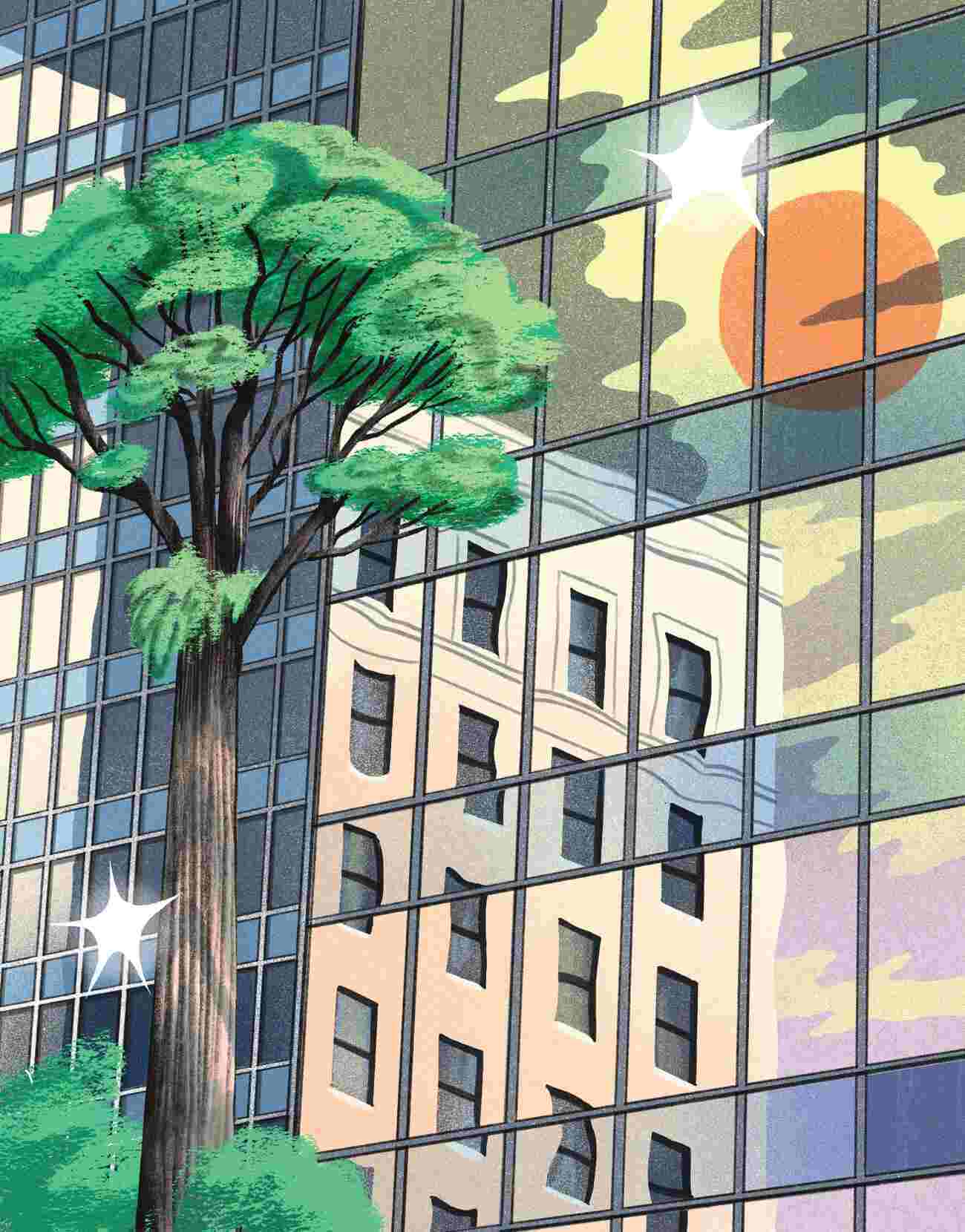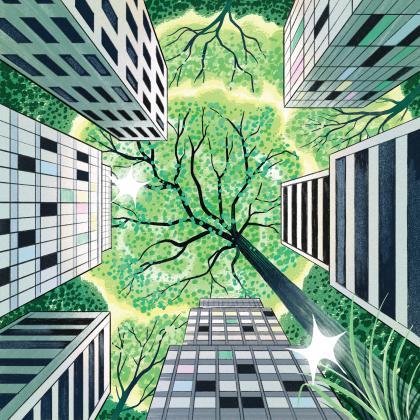Hopkins-led team says better climate modeling data can help Baltimore weather a hotter, stormier future

If you were to stand at the intersection of Maryland Avenue and West 24th Street in Baltimore's Old Goucher neighborhood and travel back in time for 10 years, you would probably be shocked at the transformation. Back then, pavement blanketed the neighborhood. Of the few trees growing along streets, many were sickly or misshapen. Concrete, asphalt, and buildings soaked up the sun's rays in summer to create a sweltering heat island, sending temperatures soaring up to 10 degrees above those of surrounding areas. Heat is a "silent killer," researchers say and can be especially dangerous for older and vulnerable people who are unable to escape into air-conditioned spaces. Old Goucher had a particularly susceptible population: people who came to be treated at the area's methadone clinics. 
Today, Old Goucher is verdant—an increasingly lush oasis amid the concrete jungle. Streets are lined with trees and understory vegetation. Islands of soil have been carved out of sidewalks. Along one block, more than 100 tons of asphalt and concrete were jackhammered and trucked away, replaced by an exuberant if somewhat unruly garden. When people enter the neighborhood, "they feel better," says Kelly Cross, a resident, and president of the Old Goucher Community Association. "It feels somehow different. They can't put their finger on it. But we know why."
Cross and his husband, Mateusz Rozanski, who moved here in 2012, have catalyzed much of the change. They simply wanted to make their neighborhood more livable, and they say the greening has helped attract new coffee shops, bars, and restaurants.
But in the era of global climate change, their work is about to take on much broader significance. Old Goucher has become a key site for one of the best-funded equity-focused urban climate research efforts ever undertaken.
In spring 2022, the U.S. Department of Energy surprised and thrilled climate scientists with a call for proposals for a new and ambitious Urban Integrated Field Laboratories (UIFL) program to deploy the power of modeling and measurement on behalf of climate-stressed cities. Ben Zaitchik, a researcher in the Johns Hopkins Department of Earth and Planetary Sciences, emailed colleagues at universities and agencies around the region and pulled together a team. The researchers proposed something unusual: a climate research project that would evolve in conversation with local community members. "I thought there was a zero percent chance we would win" one of the coveted awards, Zaitchik says.
But the proposal did win, alongside those from three other cities, out of dozens of entries. The team will have a tidy sum—nearly $25 million—to create what Zaitchik hopes will be "the most meaningful urban environmental monitoring system in the world." Zaitchik plans to blanket selected Baltimore neighborhoods, including Old Goucher, with sophisticated instruments to measure temperature and flows of gases, wind, moisture, and heat to create an unprecedented urban climate data set. Researchers in Chicago; Beaumont and Port Arthur, Texas; and Phoenix will similarly be instrumenting their cities.
The task is urgent. Cities around the country and the world are swiftly warming while humanity is rapidly urbanizing. Yet city planners and officials lack data and models to help them protect residents from this warming and its increasingly severe impacts on health and well-being. As a result, cities often have poor visibility into the climate future, putting in place measures that might not have the desired benefits or that could in some cases make things even worse.
"We really need to get it right, now," Zaitchik says. "The investment choices that we make, and the way we deliver on them for cities in the coming five to 10 years, are really going to be determinative for the future of some of these communities."
At the same time that it seeks to aid cities, the Energy Department wants the four program sites to generate data that will help it answer a separate but related question: How do cities affect the climate? Dense urban mosaics of buildings, streets, and green spaces heat and cool the air and change moisture and wind in complex ways that affect not just cities themselves but also surrounding areas. But cities have thus far been a major blind spot for the massive supercomputer models that researchers use to forecast the future of the global climate.
Meeting these science goals will be hard enough. But Zaitchik's team has designed its project to do something arguably even more ambitious: engage Baltimore community members to shape their climate-related priorities and guide their work. The project will be steered by a committee composed of city officials and community leaders like Cross and Rozanski.
While community-based research has deep roots in public health and social science, it is much less common in physical science fields, such as climate studies, where researchers typically design projects around questions they and their funders are interested in. It's also a departure for the Energy Department, says Jennifer Arrigo, an official who oversees the UIFL program. Co-production of research between scientists and communities "is something new for us." But if it succeeds, it could pay off big for Baltimore, the nation, and the world.

 How to resolve AdBlock issue?
How to resolve AdBlock issue?